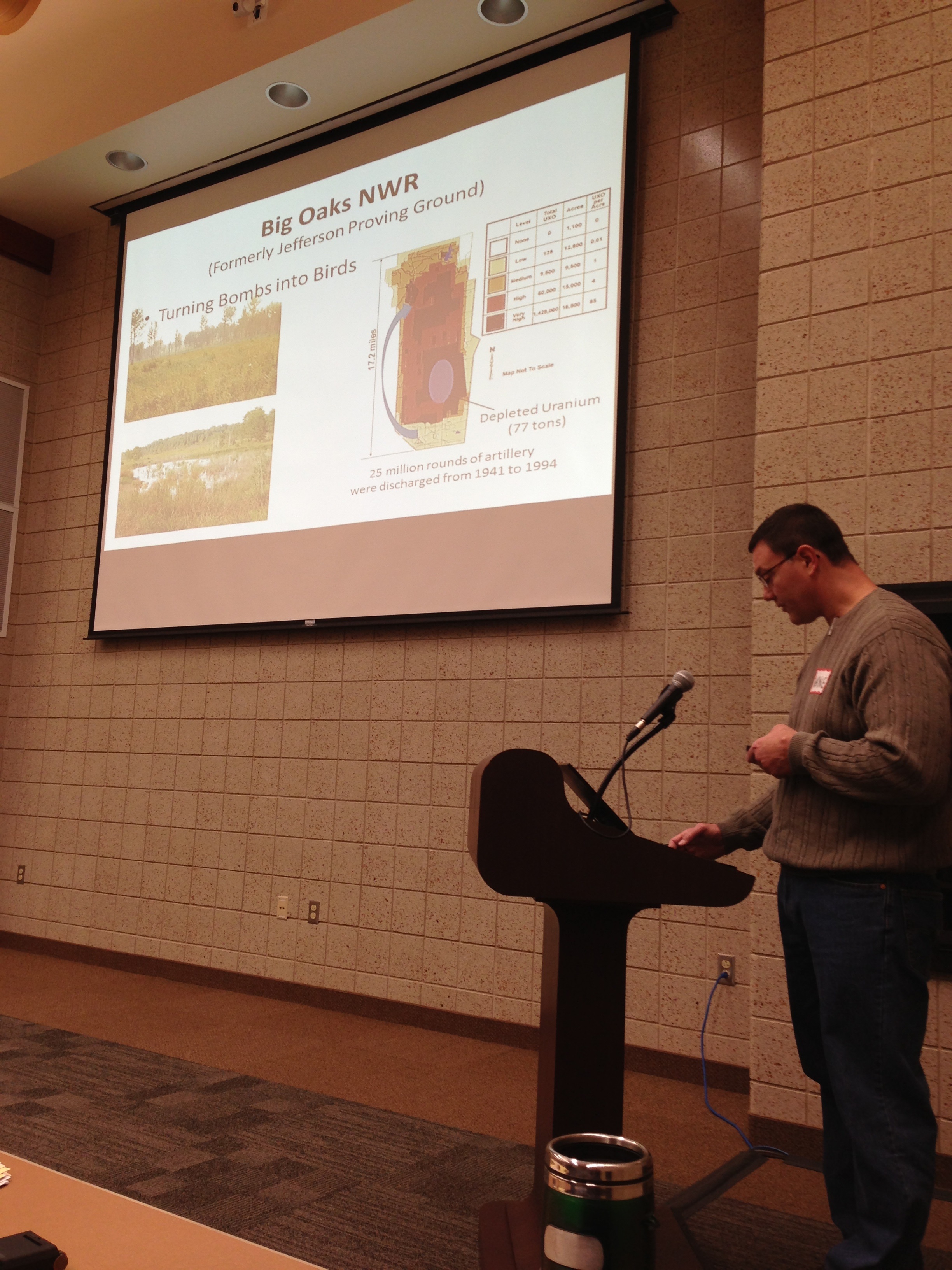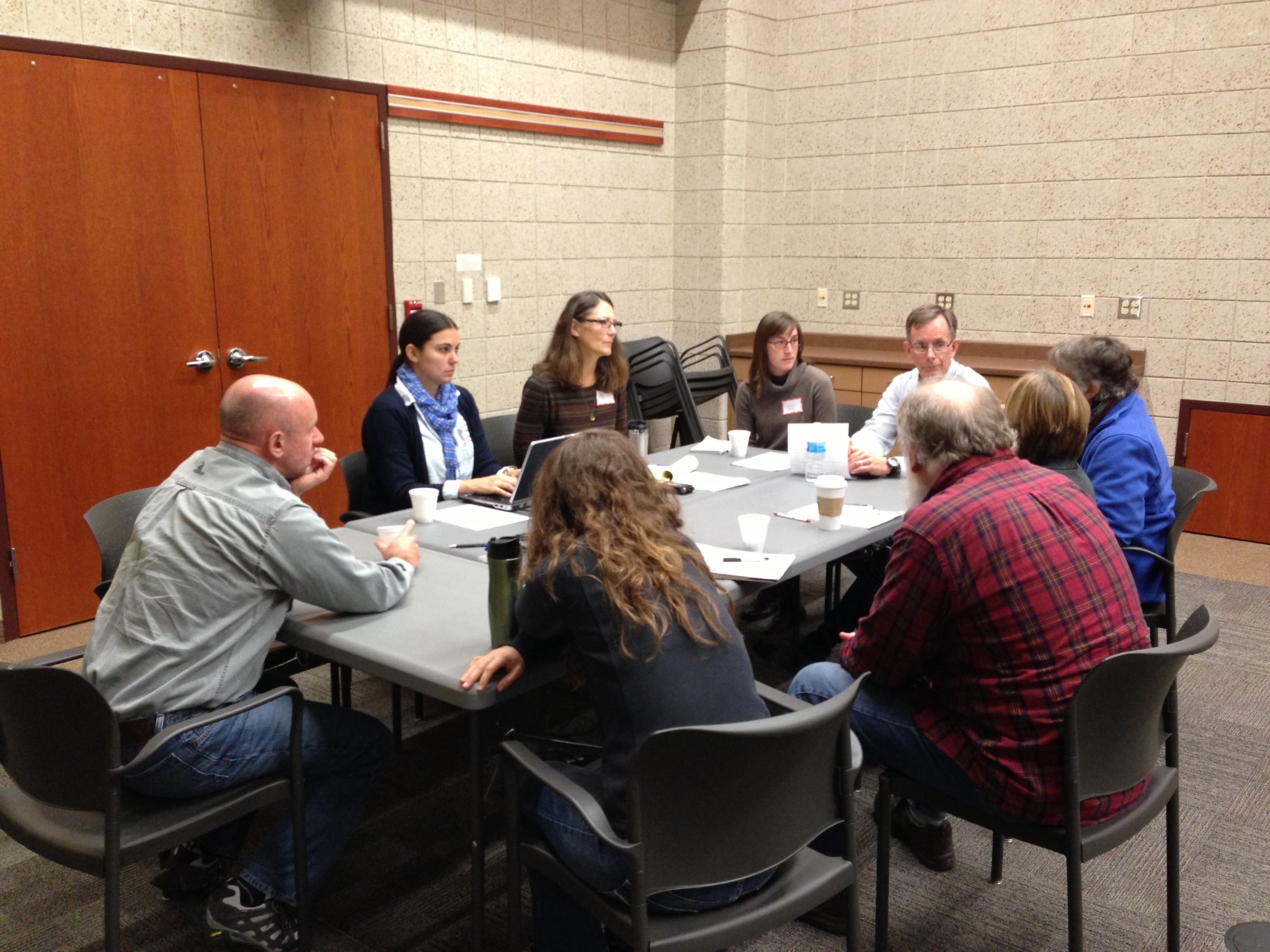Posted 01/6/16
Species distributions are expected to shift as the climate warms, which has many land managers concerned about the fate of the species they manage. Brooke Bateman, Andrew Allstadt, and Anna Pidgeon have been travelling to meet with managers to show results from their work. To better provide the information managers need, the Extreme Weather Events team is planning to provide data tailored to the needs of different managers at different scales.
Climate change, fluctuating extreme weather conditions, and the resulting change in species’ abundance and distribution, are a major concern for managers of protected areas. The uncertainty of which species will disappear from a protected area, and which will arrive leads to difficulties in creating conservation goals at both small and large scales. In addition, what role do these protected areas serve during extreme conditions, such as intense heat waves or severe drought, for the species that remain
remain? Drs Brooke Bateman, Andrew Allstadt, and Anna Pidgeon have been travelling to meet with managers to show results from their work investigating extreme weather events and changing climate on species populations and distributions. Involving end user and conservation practitioners to provide feedback on their reserach throughout their project is an ideal way to keep their research goals in line with practical on the ground conservation applications and decisions.

Dr Bateman and Dr Pidgeon travelled to Chaska, MN to meet with regional United States Fish and Wildlife Service (USFWS) personnel during the early stages of their NASA funded project to identify the climate and extreme weather data needs of regional climate managers. The goal was to highlight how such data products can be used for targeted research of climate effects on wildlife at the refuge level. Their next workshop led Dr Bateman to Ft. Collins, CO where she presented the groups findings at the National Planning Workshop of the USFWS. Here, the focus was on broad landscape scale planning for the acquisition of refuges with the aim of buffering wildlife species from climate change related pressures. The trio along with other University of Wisconsin Researchers organized a multi-agency and organization meeting in La Crosse, WI which brought personnel such as the USFWS, Landscape Conservation Cooperative units, United States Geological Survey, the Northeast Climate Science Center, Long Point Waterfowl, as well as Wisconsin and Michigan Department of Natural Resources land managers. This two day workshop included presentations on data and research along with world café style brainstorming sessions to elicit suggestions and feedback from the attendees.. “We found that managers were really interested in maps of climate change and extreme weather for their regions, especially if they showed the uncertainty of the predictions,” said Bateman. The group is trying to keep their finger on the pulse of what data managers are looking for. “Refuge managers really wanted to see predictions specific to their refuge, while regional land managers wanted information at the landscape scale.” This highlights the need to provide data at different spatial scales to meet these various needs.

As part of a future webpage redesign, data from the project will be available for anyone interested. Users will have the ability to select an area of interest and download relevant data. “We want to always include end users in research, and update our results to meet those needs,” said Batemen. As a result of these workshops, she is currently working on a project using the USFWS designated surrogate species in predictions of species distributions under future changes in climate and extreme weather. These surrogate species were selected as a way to represent other groups of species, such as prairie pothole waterfowl, to provide strategic conservation planning and identify sensitivity of these species as proxies given future change in climate. This is just another way the trio is trying to keep up with the data and research desires of land managers.”
Story by Max Henschell
